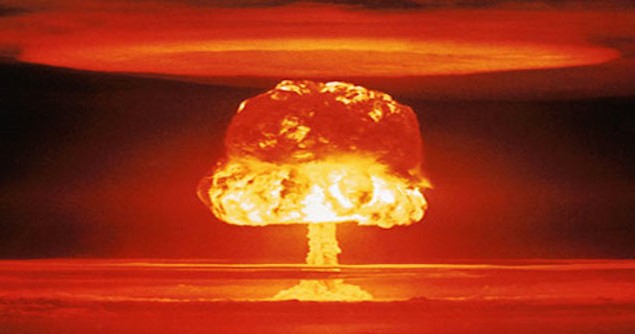India’s Illusory Gains from Nuclear Weaponisation

In May 1998, India conducted five nuclear tests. In agreeing to sell uranium to India, Australia becomes the latest country to accept, if with regrets and resignation rather than enthusiasm, the reality of India being a nuclear-armed state for the foreseeable future. Yet, even if one were to concede the tests were understandable, the question arises: What did India gain? The short answer is: Not much.
Unilateral nuclear disarmament is unlikely by any of the nuclear-armed states, including India, and is thus unrealistic as a policy goal. However, a denuclearized world that includes the destruction of India’s nuclear stockpile would favourably affect the balance of India’s security and other interests like development and social welfare, national and international interests, and material interests and value goals.
The goal of an eventually denuclearized world is both necessary and feasible. As long as any one country has nuclear weapons, others will want them; as long as nuclear weapons exist, they will be used again some day by design, miscalculation, rogue launch, human error, or system malfunction; and any nuclear war fought by any set of nuclear-armed states could be catastrophic for the whole world. For nuclear peace to hold, deterrence and fail-safe mechanisms must work every single time. For nuclear Armageddon, deterrence or fail safe mechanisms need to break down only once. This is not a comforting equation.
Nuclear weapons can be sought for compellence, defence, deterrence, and status.
“Compellence” means the use of coercion to force an adversary to stop or reverse something already being done, or to do something he would not otherwise do. There is no demonstrable instance of a non-nuclear state having been cowed into changing its behaviour by the threat of being bombed with nuclear weapons. Indian doctrine, backed by deployment patterns, explicitly eschews any intent to use nuclear weapons as tools of coercion.
It is hard to see any role for India’s nuclear armaments as instruments of defence. India’s no-first-use doctrine disavows use of nuclear weapons in response to conventional attacks. Nuclear weapons cannot be used for defence by nuclear-armed rivals whose mutual vulnerability to second-strike retaliatory capability guarantees that any escalation through the nuclear threshold would be mutual national suicide.
India’s nuclear arsenal offers no defence against a major conventional attack by China, Russia or the US – the only three countries with the capability to do so. As for intent, Russia is a diplomatic ally and friend of long standing, relations with the US have warmed to a remarkable degree (including a high-profile visit by India’s PM at the moment), and deepening and broadening bilateral Sino–Indian relations, and cooperation on several major international issues based on converging interests in forums like BRICS, provide considerable substance, texture and ballast to the relationship today. During his recent visit, President Xi Jinping signed agreements to invest $20bn to upgrade India’s woeful infrastructure.
With nuclear weapons being unusable for defence, their sole operational purpose and role is mutual deterrence. Deterrence stability depends on rational decision-makers being always in office on all sides: a shaky precondition. It depends equally critically on there being no rogue launch, human error or system malfunction: an impossibly high bar. Nuclear weapons have failed to stop wars between nuclear and non-nuclear rivals (Korea, Afghanistan, Falklands, Vietnam, 1991 Gulf War). To believe in deterrence is to argue that Iran should be encouraged, indeed facilitated in getting the bomb in order to contribute to the peace and stability of the Middle East. Good luck and good night.
Nuclearisation has failed to be a stabilizing factor in South Asia. Powerful domestic constituencies have grown up in both countries to identify a multiplication of threats that justify a matching expansion of a highly elastic nuclear posture. The low-cost, low-risk covert war in the shadow of nuclearisation had three attractions for Pakistan: it would weaken India by raising the human and economic costs of Kashmir’s occupation; the fear of nuclear escalation would raise the threshold for cross-border Indian retaliatory raids; and it would help to internationalise the Kashmir dispute by highlighting the risk of nuclear escalation.
Pakistan has invested in terrorist groups as part of its unconventional inventory against India. In responding to a terrorist attack, any deliberate escalation by India through the nuclear threshold would be extremely high-risk. The development of tactical missiles and battlefield nuclear weapons by the two sides, whose utility is contingent on proximity to battlefields, multiply the risks. India must also live with the nightmare possibility of jihadists getting their hands on Pakistan’s nuclear weapons. While obviously more acute for Pakistan, the threat is grave for India also.
Just what is a “credible minimum deterrent” – India’s official doctrine – that would dissuade nuclear blackmail and coercion and permit second-strike nuclear retaliation? China and Pakistan are incommensurate in their national power, strategic frames and military capabilities. The requirements of numbers, reach, deployment patterns and locations, and distribution between land-based, air-launched and sea-borne platforms, are mutually incompatible as between them. That which is credible towards China cannot be minimum towards Pakistan, and vice versa.
Finally, few analysts would take issue with the claim that currently, non-nuclear-armed Germany has a higher status, weight and clout in Europe and the world than nuclear-armed Britain and France. Nuclear brinksmanship earns North Korea neither prestige, power nor friends; non-nuclear-armed South Korea fares better on all three counts. India does have a higher international profile today than in 1998. This is despite, not because of nuclear weapons, and rests in its economic performance and IT credentials. Pakistan’s profile has not arisen alongside India’s since 1998, despite Islamabad’s more focussed efforts on expanding, deepening and broadening its nuclear weapons capability.
If India’s economy stutters, its social pathologies intensify and multiply and its political system proves incapable of making and implementing the hard decisions, like Pakistan, the fact that India has nuclear weapons will add to international unease and worries rather than enhance India’s global stature and international prestige. If India’s economic future is mortgaged to bad governance rooted in populist politics, other countries will return India to the basket of benign neglect while offering ritual but empty praise for its rich civilization and culture. PM Narendra Modi at least seems to get this.
Professor Ramesh Thakur is a former UN Assistant Secretary-General and Director of the Centre for Nuclear Non-Proliferation and Disarmament, Australian National University.
This article is based on Ramesh Thakur, “The Inconsequential Gains and Lasting Insecurities of India’s Nuclear Weaponization,” International Affairs 90:5 (September 2014), pp. 1101–24.





